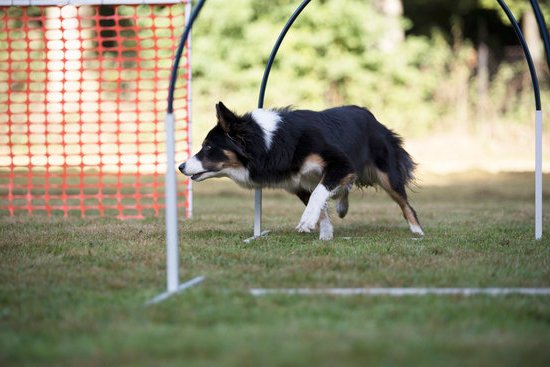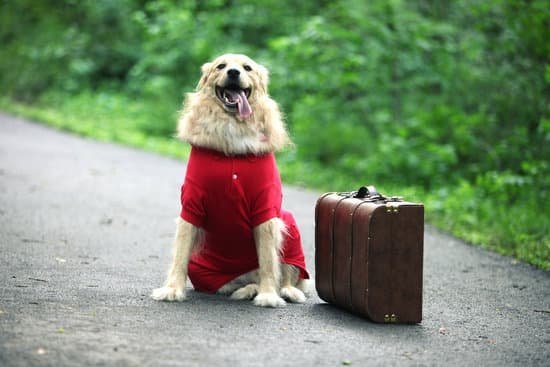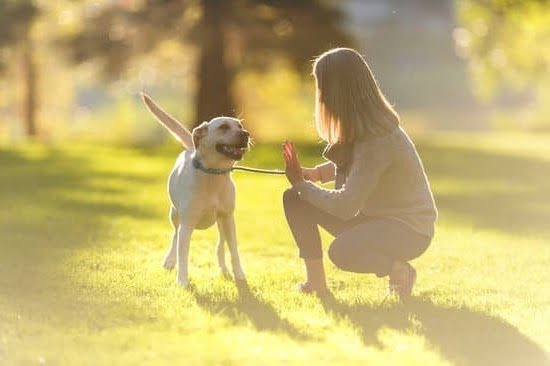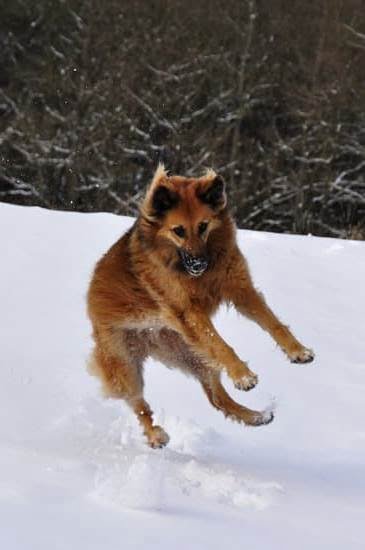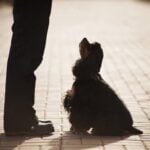Potty training a rescue dog may present unique challenges compared to training a puppy from birth. These dogs often come from uncertain backgrounds and may have experienced neglect or trauma. As a result, they may have developed behaviors and habits that make potty training more difficult. However, with patience, consistency, and understanding, it is possible to successfully potty train a rescue dog and help them adjust to their new home.
Rescue dogs may have had inconsistent or no training in the past, making it necessary to start from scratch when it comes to potty training. They may not understand the concept of where they should eliminate or may be fearful of doing so in certain areas. Additionally, some rescue dogs may have anxiety or fear-related issues related to their previous experiences, which can further complicate the process.
It’s important for pet owners to approach potty training with empathy and a willingness to adapt to their dog’s needs. By understanding the challenges involved in potty training a rescue dog and implementing strategies that cater to their individual circumstances, pet owners can set themselves up for success in creating a happy and healthy environment for their new furry friend.
In the following sections, we will explore various strategies and techniques that can help pave the way towards successful potty training with your rescue dog.
Preparing for Success
Setting up a potty training routine and schedule is essential for successfully potty training your rescue dog. This section will provide guidance on how to establish a consistent routine and schedule that will help your dog understand when and where they should go potty.
Establishing a Routine
When preparing for potty training, it’s important to establish a routine that includes consistent feeding times. By feeding your dog at the same times each day, you can create a schedule for their bathroom needs. For example, if you feed your dog twice a day, plan to take them outside to relieve themselves shortly after mealtime.
Additionally, make sure to take them outside first thing in the morning and right before bed. This regularity will help your rescue dog learn when they should expect bathroom breaks.
Using a Schedule
In addition to establishing a routine, using a schedule can further support successful potty training. Consider keeping track of when your rescue dog eats, drinks, and goes potty by creating a chart or using an app to track these behaviors. This will help you identify patterns and adjust the schedule as needed.
It’s important to note that puppies generally have smaller bladders and shorter control over their bowel movements compared to adult dogs. As such, they will need more frequent bathroom breaks throughout the day. Therefore, be prepared to adjust the schedule accordingly based on your rescue dog’s age, size, and individual needs.
Timing is Key
When implementing the potty training schedule, timing is key. Take your rescue dog outside at specific intervals based on their age and bladder capacity. For example, if you have an 8-week-old puppy, they may need to go outside every 30 minutes or so. As they grow older and gain better control over their bladder muscles, you can gradually increase the time between bathroom breaks.
Consistency is crucial during this phase. Always take your rescue dog to the same designated spot outside and use a consistent phrase or command, such as “go potty,” to encourage them to eliminate. This will help them associate the command with the behavior you want them to perform.
By establishing a potty training routine and schedule, you provide structure and consistency for your rescue dog. This will make it easier for them to understand where and when they should go potty, ultimately leading to quicker success in their potty training journey.
The Importance of Consistency
Consistency is key when it comes to potty training any dog, but it is especially important for rescue dogs who may have experienced inconsistent or unclear rules in the past. Establishing clear rules and boundaries from the beginning will not only help your rescue dog understand what is expected of them, but it will also create a sense of security and structure for them.
One of the first steps in establishing consistency is to develop a routine and schedule for potty breaks. Take your rescue dog outside to their designated potty area first thing in the morning, after meals, before bedtime, and at regular intervals throughout the day. By following a consistent schedule, you are teaching your dog when and where they should go potty.
In addition to consistency with the schedule, it is important to use consistent cues or commands when taking your rescue dog outside. Whether you say “go potty” or use a specific phrase or word, be sure to use the same cue consistently every time. This helps your dog associate that particular command with going potty and reinforces their understanding of what is expected of them.
Consistency also extends to how you react to accidents. It can be frustrating when accidents happen, but it’s important not to punish your rescue dog for mistakes. Instead, calmly clean up any messes and consider how you can prevent similar accidents in the future. Reacting with anger or punishment will only create fear and confusion in your dog, making it more difficult for them to learn.
By establishing clear rules and boundaries through consistent routines, cues, and reactions, you are setting your rescue dog up for success in their potty training journey. The more consistent you are in your approach, the quicker they will learn and adapt to their new environment. Remember that patience is key during this process as every rescue dog has their own unique background that may impact their progress. Stay consistent, remain positive, and celebrate even small milestones along the way.
Creating a Safe and Comfortable Potty Area
One of the key factors in successfully potty training a rescue dog is creating a safe and comfortable potty area. Choosing the right spot and equipment plays a crucial role in establishing good habits and reducing accidents. Here are some tips to help you create the perfect potty area for your furry friend:
- Choose an appropriate location: Find a designated area outside where your dog can go potty consistently. Look for a spot that is easily accessible and away from high traffic areas or play areas. This will help your dog understand that this specific area is for doing their business.
- Use consistent cues: Dogs rely on consistency to understand what is expected of them, so choose a cue word or phrase to associate with going potty. Use this cue each time you take your dog to their designated potty spot, which will eventually help them understand its purpose.
- Select the right equipment: There are several options available when it comes to potty equipment for your rescue dog. One popular choice is using pee pads or artificial grass mats specially designed for dogs. These are easy to clean and maintain, making them convenient for both indoor and outdoor use. Alternatively, some owners prefer using litter boxes or even creating a small outdoor patch of grass specifically for their dog’s needs.
To ensure success, be consistent with these choices and avoid changing things once you have established the potty area. It may take some trial and error to figure out what works best for your rescue dog, so be patient and willing to make adjustments if needed.
Remember, creating a safe and comfortable potty area is not only important for successful training but also helps reduce stress and anxiety in rescue dogs who may have experienced trauma in their past. By providing them with a dedicated space that they can rely on, you are setting them up for success in their potty training journey.
Positive Reinforcement Techniques
As you embark on the journey of potty training your rescue dog, positive reinforcement techniques can be a valuable tool to encourage and reward good potty behavior. By using positive reinforcement, you’ll be able to build a strong foundation for successful potty training while also strengthening the bond between you and your furry friend. Here are some effective techniques to consider:
Create a Reward System
One of the most effective ways to encourage good potty behavior is by creating a reward system. This can involve giving treats, verbal praise, or even playtime as a reward for successfully using the designated potty area. When your dog eliminates in the appropriate spot, immediately offer praise or a small treat as positive reinforcement. This will teach your dog that going in the correct area is something to be celebrated.
Use Verbal Cues
In addition to rewards, teaching your rescue dog verbal cues can also be beneficial in reinforcing good potty behavior. Choose a simple phrase like “go potty” or “do your business” and consistently use it each time you take your dog outside to eliminate. Eventually, your dog will associate this phrase with going to the bathroom, making it easier for them to understand what’s expected of them.
Be Timely with Rewards
Timing is crucial when it comes to using positive reinforcement effectively. Make sure that you provide rewards immediately after your dog exhibits good potty behavior. Dogs have a short association window, so if you wait too long before offering praise or treats, they may not make the connection between their action and the reward.
By employing these positive reinforcement techniques consistently throughout the potty training process, you can effectively motivate and encourage your rescue dog to exhibit good potty behavior. Remember that every dog learns at their own pace, so patience and consistency are key. With time and dedication, your furry friend will become reliably potty trained, making the effort well worth it.
Dealing with Accidents
Potty training accidents are a normal part of the process, especially when it comes to rescue dogs who may have had limited or inconsistent potty training in their past. It’s important to approach accidents with patience and understanding, rather than punishment. Reacting negatively can create fear or anxiety in your dog, hindering their progress and potentially causing setbacks in their potty training journey.
When accidents happen, it’s essential to address them promptly and appropriately. Here are some steps you can take:
- Remain Calm: It’s natural to feel frustrated or disappointed when accidents occur, but it’s crucial to stay calm and avoid reacting negatively towards your dog. They might not fully understand what they did wrong, so punishing them will only confuse them further.
- Clean Thoroughly: Accidents should be cleaned up quickly using an enzymatic cleaner specifically designed for pet messes. Regular household cleaners may not completely eliminate the scent of urine or feces, which could signal to your dog that it is an acceptable spot to relieve themselves.
- Determine the Cause: Try to analyze why the accident occurred, as it may provide insight into how you can prevent future incidents. Did you miss a cue from your dog that they needed to go? Were there any changes in their routine or environment that could have contributed? Identifying patterns will help you adjust your potty training methods accordingly.
It’s important not to make a big deal out of accidents or scold your dog after the fact. Instead, focus on positive reinforcement for good behaviors and continue following your established potty training routine consistently.
Remember, every dog learns at their own pace, so accidents should be seen as learning opportunities rather than setbacks. Stay patient, consistent, and positive throughout the potty training process – your rescue dog will appreciate your understanding and guidance as they adjust to their new home.
Special Considerations for Rescue Dogs
When it comes to potty training a rescue dog, special considerations must be taken into account due to the possible trauma or anxiety that these dogs may have experienced in their past. Understanding and addressing these issues is crucial for successful potty training.
Be Patient and Understanding
Rescue dogs may have come from abusive or neglectful situations, which can cause fear and anxiety related to going potty. It is important to approach the training process with patience, understanding, and empathy. Avoid rushing the dog or becoming frustrated if they are not catching on as quickly as you would like. Remember, it may take some time for them to adjust to their new environment and learn to trust you.
Set up a Calm Environment
Creating a calm and safe environment can help alleviate any anxiety your rescue dog may be feeling during potty training. Choose a quiet spot in your home where the dog can feel secure while going potty. Avoid high traffic areas or places that might startle or overwhelm them. You can also consider using calming aids such as pheromone sprays or calming music to create a peaceful atmosphere.
Gradually Introduce Outdoor Potty Training
For many rescue dogs, outdoor spaces might trigger memories of stressful experiences. Therefore, it is recommended to gradually introduce outdoor potty training once your dog has become more comfortable in their indoor set-up. Start by taking them out on a leash to an enclosed area where they can feel safe while doing their business. Allow them plenty of time to explore and adjust before expecting them to go potty.
Addressing possible trauma or anxiety is an essential part of successfully potty training a rescue dog. By being patient and understanding, creating a calm environment, and gradually introducing outdoor training, you can help your furry friend overcome any obstacles they may face during this process. Remember, each dog is unique, so it’s important to tailor your approach to their specific needs and provide plenty of love and support along the way.
Crate Training
Crate training can be a valuable tool when potty training a rescue dog. Not only does it provide a safe and comfortable space for your dog, but it can also help with the potty training process. Here are some steps to effectively use crate training as part of your potty training routine:
- Choose the right crate: It’s important to select a crate that is the appropriate size for your dog. The crate should be large enough for your dog to stand, lie down, and turn around in comfortably. If the crate is too big, your dog may be more likely to have accidents inside.
- Introduce the crate gradually: Start by making the crate a positive and inviting space for your dog. Place treats, toys, and blankets inside to make it comfortable and enticing. Allow your dog to explore the crate at their own pace.
- Establish a routine: Incorporate the crate into your potty training routine. Take your dog outside to their designated potty area before placing them in the crate, and immediately after letting them out of the crate. This will help reinforce that outside is where they should go potty.
- Use consistent cues: When it’s time for your dog to go outside, use a specific cue or command such as “go potty” or “outside.” Repeat this cue each time you take them out of the crate and reward them with praise or treats when they successfully go potty outside.
- Avoid using the crate as punishment: It’s essential to create positive associations with the crate so that your dog feels comfortable spending time inside. Never use the crate as a form of punishment or confinement for extended periods.
- Gradually increase freedom: As your dog becomes more reliable with their potty training, you can gradually give them more freedom outside of the crate under supervision. Start by allowing short periods outside of the crate and gradually increase the duration as long as they continue to have success with their potty training.
Crate training can be a valuable tool in aiding potty training progress for rescue dogs. However, it’s important to remember that each dog is unique, and the timeline for crate training may vary. Be patient, consistent in your routine, and provide plenty of positive reinforcement, and you will see progress over time.
Incorporating Regular Exercise
Regular exercise is an essential component of successfully potty training a rescue dog. Not only does exercise help to manage your dog’s energy levels, but it also promotes regular bathroom breaks, which can aid in the potty training process. By incorporating physical activity into your daily routine, you can create a balanced and structured environment that will support your dog’s learning and development.
When it comes to exercise, it’s important to tailor the activities to suit your dog’s age, breed, and overall health. For high-energy dogs, vigorous activities such as fetching, running, or agility training may be suitable. On the other hand, low-energy dogs may benefit from walks or gentle play sessions.
In addition to regular exercise, it’s crucial to establish a consistent bathroom schedule for your rescue dog. Taking them outside at regular intervals throughout the day will help them develop a routine and better understand when and where they should eliminate. It’s recommended to take your dog out first thing in the morning, after meals or naps, before bedtime, and any time they show signs of needing to go.
| Benefits of Regular Exercise: | Benefits of Regular Bathroom Breaks: |
|---|---|
| 1. Helps manage energy levels | 1. Reinforces potty training routine |
| 2. Promotes physical and mental well-being | 2. Prevents accidents indoors |
| 3. Provides an outlet for excess energy | 3. Builds bladder control |
By incorporating regular exercise into your rescue dog’s daily routine and promoting regular bathroom breaks, you can effectively manage their energy levels and support their potty training progress. Remember to be patient and consistent, as each dog’s learning process is unique. With time and dedication, your rescue dog will develop good bathroom habits and become a well-potty trained member of your family.
Troubleshooting Common Challenges
Potty training a rescue dog can present unique challenges that require patience and understanding. Despite your best efforts, setbacks may occur during the potty training process. This section will explore common challenges that you may encounter while potty training your rescue dog and provide strategies for overcoming them.
One common challenge is a lack of progress or regression in potty training. If your rescue dog is not showing signs of improvement or has started having accidents after seemingly mastering the concept, it could be due to various factors such as stress, anxiety, or medical issues. It is important to rule out any underlying medical conditions by consulting with a veterinarian.
Once medical issues have been ruled out, consider whether any changes in the environment or routine may have triggered the setback. Addressing these factors and reinforcing consistent potty training practices can help your rescue dog get back on track.
Another challenge that owners may face is marking behavior. Marking behavior involves a dog urinating on vertical surfaces to claim territory. This behavior can be frustrating and difficult to address during the potty training process.
To discourage marking behavior, it is essential to thoroughly clean any areas where the dog has marked with an enzymatic cleaner to eliminate lingering scents. Additionally, closely supervise your rescue dog when indoors and redirect their attention away from marking behaviors using positive reinforcement techniques such as treats or verbal praise.
| Common Challenge | Strategy for Overcoming Setback |
|---|---|
| Lack of Progress/Regression in Potty Training | – Rule out medical conditions
|
| Marking Behavior | – Thoroughly clean marked areas with enzymatic cleaner
|
Lastly, some rescue dogs may struggle with fear or anxiety related to the potty training process. This can manifest as hesitation, refusal to go outside, or accidents caused by stress. To address these challenges, it is crucial to create a calm and supportive environment for your rescue dog.
Gradually introduce them to the potty training routine and provide plenty of positive reinforcement and rewards for successful bathroom trips. If necessary, seek guidance from a professional dog trainer or behaviorist who can help you implement specific strategies to alleviate anxiety during the potty training process.
By being aware of common challenges and implementing appropriate strategies, you can effectively overcome setbacks in your rescue dog’s potty training journey. Remember that each dog is unique, so it is essential to remain patient and adaptable in your approach. With time and consistency, your rescue dog will develop good potty habits and successfully adjust to their new home environment.
Sources:
- American Society for the Prevention of Cruelty to Animals (ASPCA). (n.d). “House Training Your Adult Dog or Rescue Dog.” ASPCA.org.
- College of Veterinary Medicine & Biomedical Sciences at Texas A&M University. (n.d). “Housetraining Your Puppy.” VETMED.TAMU.edu.
Celebrating Milestones
Transitioning a rescued dog from potty training to freedom and independence is an important milestone in their journey. It signifies that they have learned to control their bladder and bowels, and have developed the necessary habits to use the appropriate outdoor space for elimination. Gradual transitions during this process are crucial for ensuring long-term success and preventing any setbacks.
One way to begin the transition is by gradually expanding your dog’s access to different areas of your home. Start by allowing them access to one room at a time, always keeping an eye on them to ensure they do not have any accidents. As your dog consistently demonstrates good potty behavior in that specific area, you can gradually introduce more rooms until they have full access to the entire house.
Another milestone that can be celebrated is when your rescue dog begins signaling their need to go outside. Some common signals include whining, scratching at the door, or pacing back and forth near the exit. When you notice these signs, promptly take them outside to their designated potty area.
It is important during this phase of transitioning to continue reinforcing good potty habits with positive reinforcement techniques. Praise and reward your dog every time they eliminate in the correct area. This will help solidify their understanding that going outside is the desired behavior.
Incorporating regular exercise into your rescue dog’s routine is also essential during this stage of transitioning. Exercise helps stimulate bowel movements and bladder activity, making it easier for them to hold it in between bathroom breaks. Make sure to provide opportunities for exercise throughout the day, such as walks or playtime.
Overall, celebrating milestones during the transitioning process can motivate your rescue dog and reinforce good potty habits. Gradually increasing their access to different areas of the home, recognizing their signaling behaviors, continuing positive reinforcement techniques, and incorporating regular exercise are all key elements in achieving freedom and independence in potty training.
| Milestone | Celebration Technique |
|---|---|
| Gradual expansion of access to different rooms | Monitor for accidents and gradually introduce more rooms as they demonstrate consistent potty behavior. |
| Signaling the need to go outside | Promptly respond to their signals and take them outside to their designated potty area. |
| Consistently eliminating in the correct area | Praise and reward your dog every time they eliminate outside. |
| Incorporating regular exercise | Provide opportunities for exercise throughout the day, stimulating bowel movements and bladder activity. |
Conclusion
Potty training a rescue dog can be a challenging and sometimes frustrating process, but with patience, consistency, and the right approach, it is absolutely possible to achieve success. Throughout this article, we have discussed various strategies and techniques that can help you in potty training your rescue dog.
From setting up a routine and establishing clear rules to creating a safe and comfortable potty area and using positive reinforcement techniques, each step plays an important role in achieving the desired outcome.
One essential aspect emphasized throughout this guide is the importance of celebrating milestones along the way. Each time your rescue dog successfully uses their designated potty area or goes outside to relieve themselves, it is a reason for celebration. By acknowledging these successes with praise and rewards, you are encouraging your dog to continue exhibiting good potty behavior. Additionally, celebrating milestones helps maintain your motivation and patience during the process.
While it’s important to celebrate successes, it’s equally crucial to remember that potty training takes time. Every rescue dog comes with their own unique set of experiences and challenges that may impact their ability to learn new habits. It’s important to remain patient and understanding throughout the entire journey. Accidents are bound to happen occasionally, but instead of reacting with anger or punishment, focus on reinforcing positive behavior and continuing to build trust with your furry companion.
In conclusion, successfully potty training a rescue dog requires commitment, consistency, and understanding. By following the tips outlined in this article – including setting up a routine, creating a safe potty area, using positive reinforcement techniques – you can make great strides in teaching your pup appropriate bathroom behaviors.
Remember to celebrate both small triumphs and bigger milestones along the way while maintaining patience throughout the process. With time and effort, you’ll see progress and develop an even stronger bond with your beloved rescue dog.
Frequently Asked Questions
Are rescue dogs harder to potty train?
Rescue dogs may present unique challenges when it comes to potty training, but it’s not necessarily accurate to say that they are harder to train than other dogs. Many rescue dogs have experienced trauma or neglect in their past, which can affect their behavior and ability to learn new routines. Additionally, some rescue dogs may have never been properly trained or socialized before coming into a new home.
This lack of previous training can make the process seem more difficult. However, with patience, consistency, and positive reinforcement, most rescue dogs can be successfully potty trained just like any other dog.
How do I stop my rescue dog from peeing and pooping in the house?
To stop your rescue dog from peeing and pooping in the house, it’s crucial to identify the underlying reasons for this behavior. First and foremost, ensure that there are no medical issues causing your dog’s accidents by consulting with a veterinarian. Assuming there are no medical concerns, focus on providing a consistent routine for your dog that includes frequent bathroom breaks outside.
Use positive reinforcement techniques such as treats and praise when your dog goes potty in the appropriate place. Supervise your dog closely indoors and use confinement or crate training if necessary when you cannot directly observe them. Clean any accidents thoroughly to remove the scent so that it doesn’t encourage repeat marking or elimination.
Why won’t my rescue dog go potty?
There could be multiple reasons why your rescue dog is not going potty. Firstly, it’s important to rule out any potential medical issues by taking them to a veterinarian for an evaluation. If no physical problems are detected, consider potential behavioral factors such as anxiety or fear that might be preventing your dog from feeling comfortable enough to relieve themselves outside or in designated areas.
The transition from a shelter or previous living situation to a new home can be stressful for rescue dogs, which might impact their bathroom habits initially. Providing a consistent routine and comfort in their environment will help build trust and alleviate anxiety over time. Patience is crucial during this adjustment period as you work together with your rescue dog to establish a new potty routine.

Welcome to the blog! I am a professional dog trainer and have been working with dogs for many years. In this blog, I will be discussing various topics related to dog training, including tips, tricks, and advice. I hope you find this information helpful and informative. Thanks for reading!

